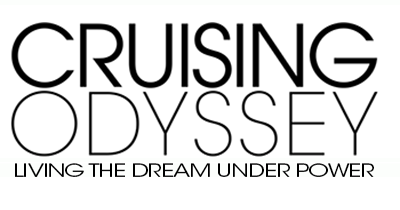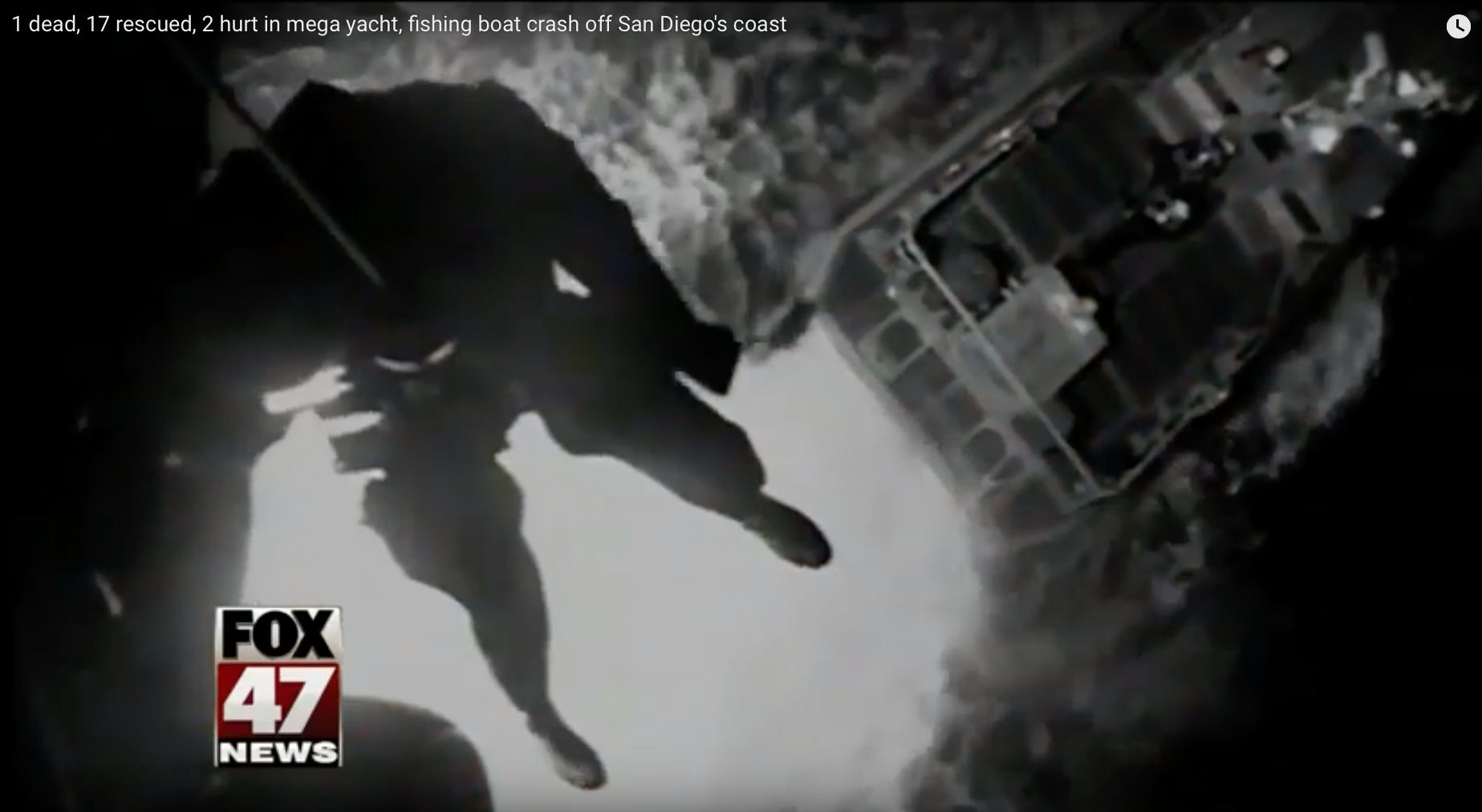Whatever Happened to Situational Awareness?
By Peter A. Janssen
Is anybody paying attention out there? A few alarming, and tragic, events recently make that question all too relevant.
The most recent, and glaring, accident involved the collision of the 332-foot megayacht Attessa IV, one of the largest private yachts in the world, with a 65-foot wooden charter boat named Prowler, in the Pacific south of San Diego. The Coast Guard airlifted a seriously injured passenger off Prowler (see the picture above), but he died four hours later in a San Diego hospital.
The Coast Guard is investigating the accident, but the question is, how did this ever happen? Both boats had radar, and Prowler, as a commercial vessel 65 feet or more, was required to have AIS. On a working radar, the steel hull of Attessa IV should have lit up like a battleship; it would be hard not to see it coming. Yet there was no warning from either vessel before the collision in the open ocean nine miles off Imperial Beach.
At the time, Attessa IV was heading for Mexico. Prowler was heading back to San Diego. Attessa IV ran into the starboard quarter of Prowler, causing extensive damage. It’s hard to conceive that nobody on either yacht saw the other one coming.
But that lack of situational awareness reminded me of another story we covered just a few weeks ago, when the captain of a 60-foot Princess pleaded guilty to seaman’s manslaughter after he ran over a 23-foot Steiger Craft off Rhode Island, killing the only person on board, an 81-year-old man returning home after a morning’s fishing. At the trial, the prosecution said the Princess’ GPS showed it was going 25.2 knots, visibility was clear for miles, and the captain of the boat simply lost situational awareness.
Earlier this year, the Navy charged the commanding officers of two destroyers that collided with merchant ships in the Far Pacific, resulting in the deaths of 17 sailors, with negligent homicide, saying “the collisions were avoidable.” In its investigations, the Navy found that a lack of situational awareness was a key factor in both tragedies.
All those accidents made me think of a totally bizarre experience I had two years ago while cruising off the northern coast of Florida on Dirigo, Sabre’s brand new 66-foot flagship. David Jirikovic, of Down East Yacht Sales in Jupiter, was driving the boat late in the day, when we saw another boat, probably a 45- or 50-foot express, about a mile away at our 10 o’clock position.
We kept an eye on it as it got half a mile away, holding its course and bearing, looking like it was on a collision course with us. There was absolutely no doubt that we were the starboard vessel and had the right of way. We tried to reach the other boat on the VHF, but there was no response. As it got closer, Jirikovic sounded five blasts of Dirigo’s loud new horn, but nothing changed. He finally pulled Dirigo to a stop as the express passed about 40 yards in front of us, still holding the same course and bearing. We couldn’t see anyone on board, but whoever was there was totally oblivious.
I think these incidents show that you can probably get away with being oblivious once or twice or even a few times, if you’re lucky. But eventually a lack of situational awareness will catch up with you. And the results can be fatal.




